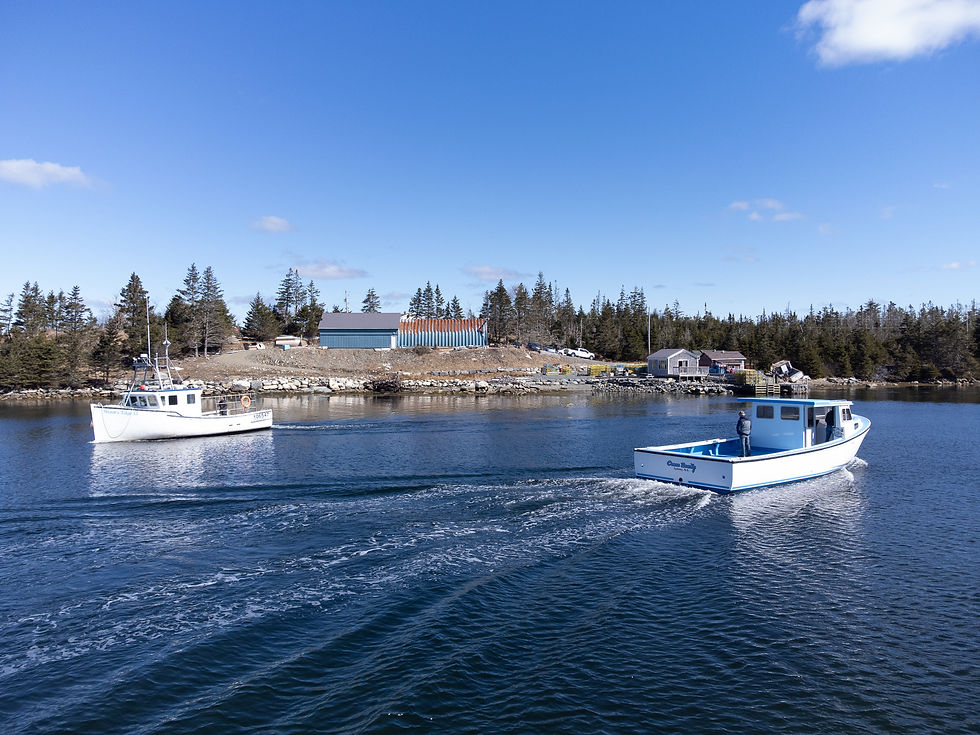New report finds fertile ground for electrification of maritime lobster fleet
- communications193
- Nov 10, 2023
- 3 min read
"The Nova Scotia lobster fishery is well suited to advance the development and commercialization of emission-free alternatives to diesel," states a report recently released by Oceans North, a Canadian charitable conservation organization.
With decarbonization in Canada's future—a goal of net-zero emissions by 2050—little attention has been paid to on-water vessels and how they can transition to a zero-emission world. This report changes that.

Among many encouraging facts found in the report are several that stand out:
- 70 per cent of the Nova Scotia lobster fleet fish within 20km of their home port, making 2000-plus vessels good candidates for electrification.
- The operating and maintenance cost of a battery-electric system is expected to be much lower than diesel-powered vessels, meaning that with incentives to address the higher capital costs zero-emission systems will be competitive over the 20-year lifespan of the vessel.
- There is potential for significant economic activity in Nova Scotia related to the construction of new vessels and the installation and operation of shoreside infrastructure.
- The lobster fishery produces approximately 82 million kilograms of CO2, roughly equivalent to up to 35,000 cars' driving for a year. Converting lobster boats that fish within 20km of shore to electric propulsion could reduce the fleet's emissions by more than 60 per cent.
- For the lobster fleet to be net-zero by 2050, it is believed that 10% of the fleet will need to be powered by renewable energy and zero-emission fuels by 2030.
For boatbuilders, the report says assistance and incentives should be available to develop new designs and hull moulds to create more efficient builds. "Current vessel designs," it says, "have been optimized around the most efficient placement of diesel engines and fuel tanks." In a battery-powered electric vessel, on the other hand, the battery placement might be different. A battery will take up about one tenth of the space available on a vessel, but is much heavier than a diesel storage tank. High-efficiency hulls with new zero-emissions designs could be the future of lobster boats.

The report contains four chapters. The first considers zero-emission propulsion systems like batteries or hybrid hydrogen fuel cells. Chapter two calculates the energy profile of the lobster fleet—how far they travel, how much fuel they use, estimated emissions and more—to evaluate the potential of adopting zero-emission technology for the entire fleet. Chapter three looks at the economics of electrified lobster vessels and highlights the lower lifetime cost of battery-electric vessels for owners, and chapter four explores economic, social and environmental benefits and incentives to make the change, and includes recommended actions by the provincial and federal governments.
Oceans North commissioned the report and assembled the research team which included Allswater a naval architecture and engineering firm working on vessel decarboniztion, BlueGrid by Rimot, an IT firm specializing in marine vessel electrification, Membertou Fisheries, the Renewable Energy Storage Lab at Dalhousie University, NSCC and Kempy Energetics. NSBA sat on the Project Advisory Committee for the report.

Nova Scotia's lobster fishery is iconic. In addition to its cultural importance, it represents more than 80% of the value of the province's fisheries. "Despite a rapidly changing policy landscape calling for full marine decarbonization no later than 2050," says Oceans North's report, "no clear strategy is in place to transition the lobster fishery or other commercial fisheries in Canada to zero-emission technologies and fuels."
Thanks to Oceans North and their colleagues, that is beginning to change.
“The adoption of electric propulsion systems would help Canada to achieve its emission reduction potential and provide real-world benefits for fishers," says Dancey, "through reduced operating costs and a cleaner, pollution-free work environment."
Click here to read the report. It has been covered by Global News, The National Observer and the Toronto Star.
To learn more about Oceans North and their activities visit oceansnorth.org.








Comments